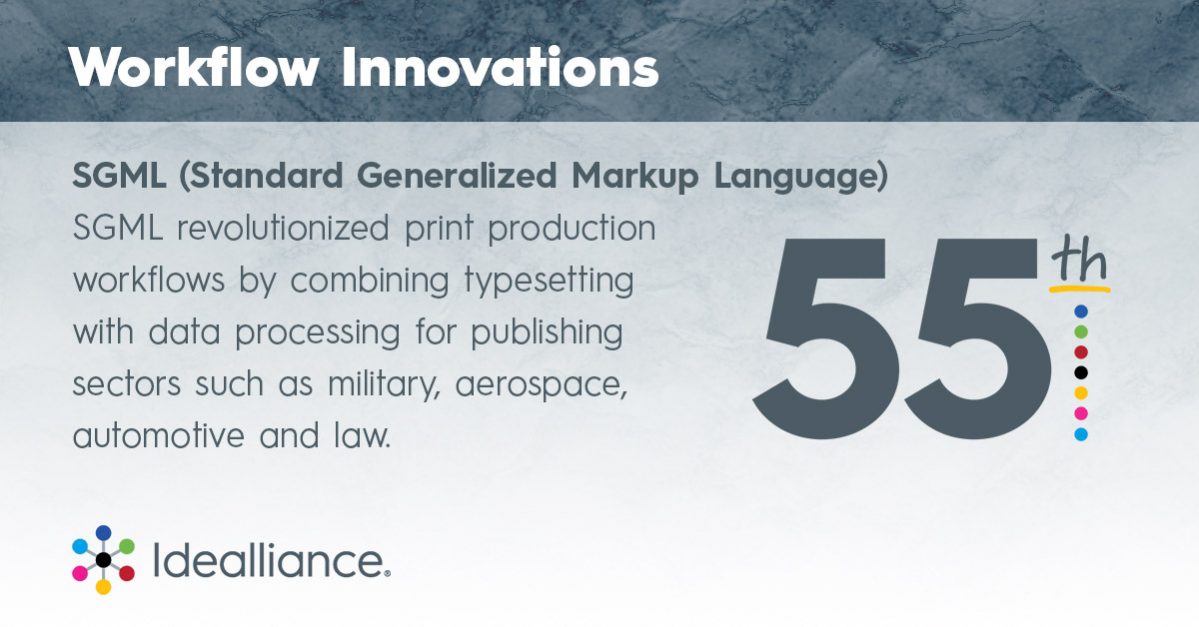Workflow Innovations—Standard Generalized Markup Language (SGML)
- November 9, 2020
- Category: Updates ,

Workflows that Enhance Efficiency and Communication
Idealliance understands that productivity and efficiency are at the center of an effective workflow. We have created standards-based, automatable processes, enabling every part of the print supply chain to change, grow, and prosper. Over many decades, as both disrupter and architect, Idealliance has reimagined future workflows, shaping the way our supply chain partners operate. This series explores the history of many of those workflow innovations.
What is SGML?
SGML (Standard Generalized Markup Language)
In the early 1980’s, computerized layout composition of text and graphics for print publication was driven by embedding proprietary electronic markup codes such as [bold], [14pt], [centerAlign] or [breakPage].
But an Association member, IBM, came up with a new kind of electronic markup, called “Gencodes.” The idea was that embedded electronic codes could serve two purposes; identify the text structure being formatted (such as <title>, <para>, or <chapter>) and be mapped to precise typesetting instructions such as “bold” or “breakPage”. This idea was so powerful because for the first time, markup could drive typeset layout and could also be used to apply data processing techniques to enhance text by automating the construction of structures like indices and tables of contents. The Association, under the leadership of IBM, formalized the Gencode Specification, which was eventually standardized by ISO as ISO 8879, SGML. SGML revolutionized print production workflows by combining typesetting with data processing for publishing sectors such as military, aerospace, automotive and law.
Workflow Innovations from Idealliance
- The SPECTRUM Connection
- SGML (Standard Generalized Markup Language)
- PRISM (Publishers Requirement for Industry Standard Metadata)
- XML (eXtensible Markup Language)
- DISC (Digital Image Submission Criteria)
- G7 Calibration
- PQX (Print Quality eXchange)
- Mail.XML
- papiNet
- PROSE XML
- Mail.dat
- SWOP (Specification for Web Offset Publications)
